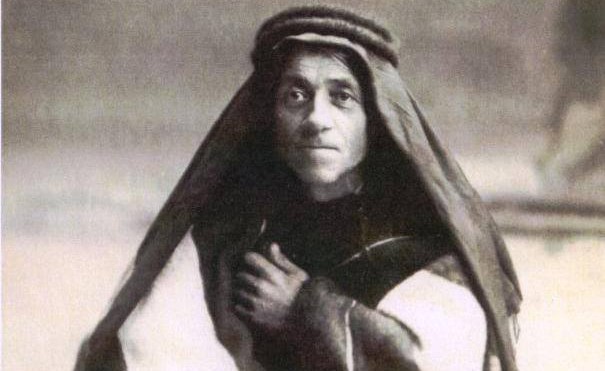Thousands of women and children surviving the genocide were found in the homes of Turks, Kurds, and Arabs, many times taken there against their will. The efforts of various volunteers, who undertook the search for survivor orphans and women, succeeded in returning many of them to their nation. One of them was Roupen Herian.
Roupen Herian was born in Tokat in 1869. After graduating from the local school in 1883 he left for Constantinople, before moving to Boston in 1900 and then to New York, where he engaged successfully in the tobacco industry. He had become a member of the Social Democrat Hunchakian Party when he was still in Tokat, and after the division of the party in 1896, he sided with the Reorganized Hunchakian Party. He joined the Armenian General Benevolent Union (AGBU) after its foundation in 1906 and in 1908 became a member of the Armenian Constitutional Democratic Party (one of the predecessors to the Armenian Democratic Liberal Party).
After World War I broke out, Herian helped arrange the transportation of many of the 1,200 Armenian-Americans who joined the Armenian Legion. He also became a legionnaire, but because of his age, he was not sent to fight to the Palestine front in 1918. He served as the director of an infirmary in Egypt for the legionnaires.
In 1919, the AGBU created a fund to contribute to the liberation of kidnapped Armenian women and children from the Bedouins, Turks, Kurds, and their harems. The “gray-haired young man,” as they called Herian because of his gray hair and joyful nature, fought his war after the war starting in April 1919. In a letter written in July from Deir-ez-Zor, he wrote: “I am in the criminal city… there is a lot to do here, there are still hundreds of orphans amid the Arabs and their liberation is the greatest work in my opinion… my plan is very big… I will try to go through all the ashirets (tribes) and gather as many as possible… even though the weather is very hot, but the goal is so high.”
Using his linguistic skills, Herian disguised himself as needed as an American missionary, British official or Bedouin. Against all odds, he made recourse to all methods, from persuasion to money to strong-arm tactics to rescue Armenian women and children from their captors. Between June and August 1919, he sent more than 500 of them to Aleppo. He also carried out missions in the vicinity of Mosul, where he recovered hundreds of people, including 400 orphans admitted in the orphanage of Baquba. The Muffetish-el-Ermen, the “inspector of the Armenians,” as he was known in Arabic circles, wrote: “The orphans are the heart of Armenia, even saving one Armenian is in our benefit… When walking through the desert the white skeletons shining under the sun cry ‘save our little orphans,’ who can remain indifferent? I won’t spare efforts and energy until my death.”
In October 1919, he returned to Deir-ez-Zor with fresh funds, but the situation in the desert was quite confuse and the Arabs had started a rebellion. Herian was barely able to save his life. He participated in fundraising activities in France and the United States. Upon his return from the United States, he intended to marry an orphan Armenian woman and settle in Mersin (Cilicia), but a few days before the wedding, he suffered a heart attack and passed away on July 7, 1921, in Cairo (Egypt), where he was buried. His last words were: “I am satisfied to have given some value to my life.”

